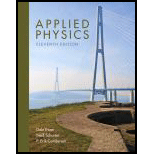
Applied Physics (11th Edition)
11th Edition
ISBN: 9780134159386
Author: Dale Ewen, Neill Schurter, Erik Gundersen
Publisher: PEARSON
expand_more
expand_more
format_list_bulleted
Concept explainers
Textbook Question
Chapter 21, Problem 3RQ
A real image may be
a. erect.
b. shown on a screen.
c. formed by a plane mirror.
d. none of the above.
Expert Solution & Answer
Want to see the full answer?
Check out a sample textbook solution
Chapter 21 Solutions
Applied Physics (11th Edition)
Ch. 21.5 - Given so = 1.65 cm and st = 6.00 cm, find f.Ch. 21.5 - Given f = 15.0 cm and st = 3.00 cm, find so.Ch. 21.5 - Given st = 14.5 cm and f = 10.0 cm, find so.Ch. 21.5 - Given st = - 10.0 cm and f = - 5.00 cm, find so.Ch. 21.5 - Given so = 7.35 cm and st = 17.0 cm, find f.Ch. 21.5 - Given ht = 2.75 cm, ho = 4.50 cm, and st = 6.00...Ch. 21.5 - Given ho = 12.0 cm, st = 13.0 cm, and so = 25.0...Ch. 21.5 - Given ht = 3.50 cm. hs = 2.50 cm, and st = 15.5...Ch. 21.5 - If an object is 2.50 m tall and 8.60 m from a...Ch. 21.5 - An object 30.0 cm tall is located 10.5 cm from a...
Ch. 21.5 - Prob. 11PCh. 21.5 - An object 12 6 cm in front of a convex mirror...Ch. 21.5 - What is the height of an image in a truck mirror...Ch. 21.5 - A lift truck has a rear view mirror that is 0.76 m...Ch. 21.5 - Find the focal length of a convex mirror that...Ch. 21.5 - Find the focal length of a mirror that forms an...Ch. 21.5 - Find the focal length of a mirror that forms an...Ch. 21.5 - An image of a statue appears to be 11.5 cm behind...Ch. 21.5 - (a) What is the height of a figurine 7.33 cm in...Ch. 21.10 - Find the index of refraction of a medium for which...Ch. 21.10 - Prob. 2PCh. 21.10 - If the index of refraction of a liquid is 1.50,...Ch. 21.10 - The angle of incidence of light passing from air...Ch. 21.10 - If the critical angle of a liquid is 42.4, find...Ch. 21.10 - If the index of refraction of a substance is 2.45,...Ch. 21.10 - A converging lens has a focal length of 15.0 cm....Ch. 21.10 - An object 2.50 cm tall is placed 20.0 cm from a...Ch. 21.10 - The focal length of a lens is 5.00 cm. How far...Ch. 21.10 - If the distance from the lens in your eye to the...Ch. 21.10 - An object 5.00 cm tall is placed 15.0 cm from a...Ch. 21.10 - An object 4.50 cm tall is placed 18.0 cm from a...Ch. 21.10 - What are the size and location of an image...Ch. 21.10 - What are the size and location of an image...Ch. 21.10 - What is the focal length of a convex lens that...Ch. 21 - Stained glass is an example of a. a transparent...Ch. 21 - A virtual image may be a. larger than the object....Ch. 21 - A real image may be a. erect. b. shown on a...Ch. 21 - Explain the difference between diffusion and...Ch. 21 - Prob. 5RQCh. 21 - Prob. 6RQCh. 21 - Describe the type of images formed by plane...Ch. 21 - Explain the difference between real and virtual...Ch. 21 - Explain the difference between a concave and a...Ch. 21 - Explain the effect of spherical aberration.Ch. 21 - For a mirror of given focal length, how does the...Ch. 21 - For a given object distance from a mirror, how...Ch. 21 - The index of refraction depends on a. the focal...Ch. 21 - Snell's law involves a. the lens equation. b. the...Ch. 21 - Prob. 15RQCh. 21 - Give several examples of total internal...Ch. 21 - Prob. 17RQCh. 21 - Prob. 18RQCh. 21 - Prob. 19RQCh. 21 - What types of images are formed by diverging...Ch. 21 - What types of images are formed by converging...Ch. 21 - How do water waves affect the escape of light from...Ch. 21 - Explain why a fish under water appears to be at a...Ch. 21 - Does light always travel in a straight line?...Ch. 21 - Explain how total internal reflection allows light...Ch. 21 - Under what conditions will a converging lens form...Ch. 21 - Under what conditions will a converging lens form...Ch. 21 - Under what conditions will a diverging lens form a...Ch. 21 - Using 1f=1s0+1si, s0 = 3.50 cm, and si = 7.25 cm,...Ch. 21 - Using 1f=1s0+1si, s0 = 8.50 cm, and f = 25.0 cm,...Ch. 21 - Using M=hih0=sis0, h0 = 6.50 cm, si = 7.50 cm, and...Ch. 21 - If an object is 3.75 m tall and 7.35 m from a...Ch. 21 - An object 43.0 cm tall is located 23.4 cm from a...Ch. 21 - Prob. 6RPCh. 21 - The angle of incidence of light passing from air...Ch. 21 - If the index of refraction of a liquid is 1.44,...Ch. 21 - If the critical angle of a liquid is 45.6, find...Ch. 21 - If the index of refraction of a substance is 1.50,...Ch. 21 - A converging lens has a focal length of 12.0 cm....Ch. 21 - An object 4.50 cm tall is placed 20.0 cm from a...Ch. 21 - The focal length of a lens is 4.00 cm. How far...Ch. 21 - What is the focal length of a convex lens that...Ch. 21 - What is the focal length of a mirror that forms an...Ch. 21 - What are the size and location of an image...Ch. 21 - What is the speed of light passing through a...Ch. 21 - Prob. 18RPCh. 21 - Find the focal length of a concave mirror with an...Ch. 21 - Prob. 20RPCh. 21 - Tamera uses a concave mirror when applying makeup....Ch. 21 - A convex security mirror has a radius of curvature...Ch. 21 - Prob. 3ACCh. 21 - Diamonds are cut to take advantage of internal...Ch. 21 - A photographer uses a 60.0-mm lens. (a) How far...
Additional Science Textbook Solutions
Find more solutions based on key concepts
3. What is free-fall, and why does it make you weightless? Briefly describe why astronauts are weightless in th...
The Cosmic Perspective (8th Edition)
23. EST Compare the two different designs of nutcracker shown in Figure P8.23 and decide which one is more eff...
College Physics
12. A 5.0 g coin is placed 15 cm from the center of a turntable. The coin has static and kinetic coefficients o...
Physics for Scientists and Engineers: A Strategic Approach with Modern Physics (4th Edition)
(II) A 0.060-kg tennis ball, moving with a speed of 4.50 m/s, has a head-on collision with a 0.090-kg ball init...
Physics for Scientists and Engineers with Modern Physics
In Fig. 27.40, take 0 = 12 V, R1 = 4.0 , R2 = 8.0 , and R3 = 2.0 . Find current I2 (a) immediately after the sw...
Essential University Physics (3rd Edition)
The current through the 3.0 Ω resistor.
College Physics: A Strategic Approach (3rd Edition)
Knowledge Booster
Learn more about
Need a deep-dive on the concept behind this application? Look no further. Learn more about this topic, physics and related others by exploring similar questions and additional content below.Similar questions
- Consider a spherical concave mirror with the object located to the left of the mirror beyond the focal point. Using ray diagrams, show that the image moves to the left as the object approaches the focal point.arrow_forwardA dentist uses a spherical mirror to examine a tooth. The tooth is 1.00 cm in front of the mirror, and the image is formed 10.0 cm behind the mirror. Determine (a) the mirrors radius of curvature and (b) the magnification of the image.arrow_forwardA ray of light is incident on a flat surface of a Mock of crown glass that is surrounded by water. The angle of refraction is 19.6. Find the angle of reflection.arrow_forward
- Can you photograph a virtual image?arrow_forwardA plane mirror _____. (7.3) (a) produces both real and virtual images (b) always produces a virtual image (c) always produces a real image (d) has neither imagearrow_forwardA virtual image is formed 20.0 cm from a concave mirror having a radius of curvature of 40.0 cm. (a) Find the position of the object. (b) What is the magnification of the mirror?arrow_forward
arrow_back_ios
arrow_forward_ios
Recommended textbooks for you
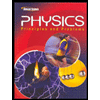 Glencoe Physics: Principles and Problems, Student...PhysicsISBN:9780078807213Author:Paul W. ZitzewitzPublisher:Glencoe/McGraw-Hill
Glencoe Physics: Principles and Problems, Student...PhysicsISBN:9780078807213Author:Paul W. ZitzewitzPublisher:Glencoe/McGraw-Hill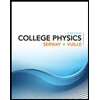 College PhysicsPhysicsISBN:9781305952300Author:Raymond A. Serway, Chris VuillePublisher:Cengage Learning
College PhysicsPhysicsISBN:9781305952300Author:Raymond A. Serway, Chris VuillePublisher:Cengage Learning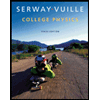 College PhysicsPhysicsISBN:9781285737027Author:Raymond A. Serway, Chris VuillePublisher:Cengage Learning
College PhysicsPhysicsISBN:9781285737027Author:Raymond A. Serway, Chris VuillePublisher:Cengage Learning Physics for Scientists and Engineers, Technology ...PhysicsISBN:9781305116399Author:Raymond A. Serway, John W. JewettPublisher:Cengage Learning
Physics for Scientists and Engineers, Technology ...PhysicsISBN:9781305116399Author:Raymond A. Serway, John W. JewettPublisher:Cengage Learning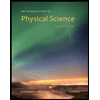 An Introduction to Physical SciencePhysicsISBN:9781305079137Author:James Shipman, Jerry D. Wilson, Charles A. Higgins, Omar TorresPublisher:Cengage Learning
An Introduction to Physical SciencePhysicsISBN:9781305079137Author:James Shipman, Jerry D. Wilson, Charles A. Higgins, Omar TorresPublisher:Cengage Learning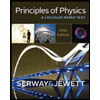 Principles of Physics: A Calculus-Based TextPhysicsISBN:9781133104261Author:Raymond A. Serway, John W. JewettPublisher:Cengage Learning
Principles of Physics: A Calculus-Based TextPhysicsISBN:9781133104261Author:Raymond A. Serway, John W. JewettPublisher:Cengage Learning

Glencoe Physics: Principles and Problems, Student...
Physics
ISBN:9780078807213
Author:Paul W. Zitzewitz
Publisher:Glencoe/McGraw-Hill

College Physics
Physics
ISBN:9781305952300
Author:Raymond A. Serway, Chris Vuille
Publisher:Cengage Learning

College Physics
Physics
ISBN:9781285737027
Author:Raymond A. Serway, Chris Vuille
Publisher:Cengage Learning

Physics for Scientists and Engineers, Technology ...
Physics
ISBN:9781305116399
Author:Raymond A. Serway, John W. Jewett
Publisher:Cengage Learning

An Introduction to Physical Science
Physics
ISBN:9781305079137
Author:James Shipman, Jerry D. Wilson, Charles A. Higgins, Omar Torres
Publisher:Cengage Learning

Principles of Physics: A Calculus-Based Text
Physics
ISBN:9781133104261
Author:Raymond A. Serway, John W. Jewett
Publisher:Cengage Learning
AP Physics 2 - Geometric Optics: Mirrors and Lenses - Intro Lesson; Author: N. German;https://www.youtube.com/watch?v=unT297HdZC0;License: Standard YouTube License, CC-BY